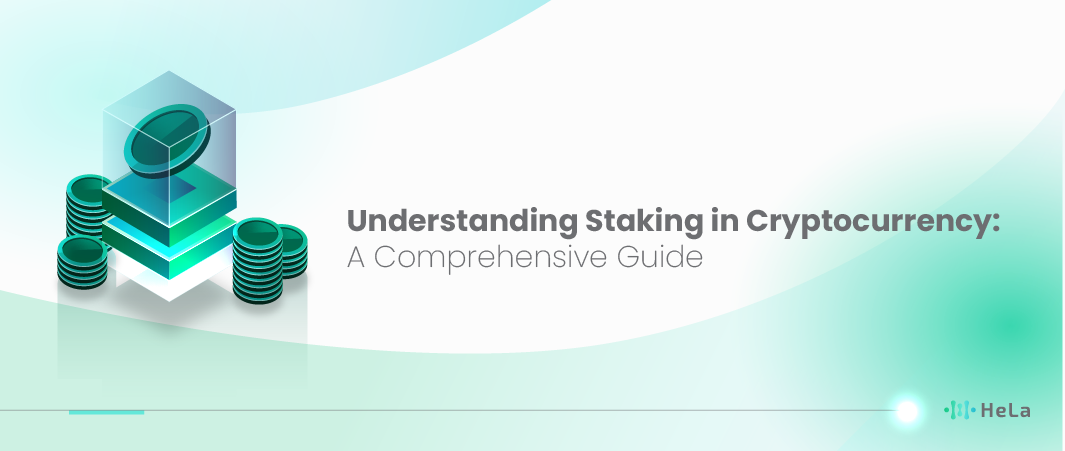In the fast-evolving world of cryptocurrency, staking has emerged as a powerful strategy for investors seeking to generate passive income. Unlike traditional investments, crypto staking offers the unique advantage of earning rewards simply by holding and validating digital assets. What Staking Crypto is and The Strategy for Investment Portfolio highlights this method, which not only provides a steady income stream but also contributes to the security and efficiency of blockchain networks. As we dive deeper into 2024, understanding how to leverage staking can be a game-changer for both novice and seasoned investors.
By staking your crypto assets, you can earn consistent rewards without the need for active trading or constant market monitoring. This hands-off approach is ideal for those looking to grow their wealth effortlessly while still reaping the benefits of the crypto market’s dynamic nature. In an era where financial stability is paramount, staking stands out as a reliable and lucrative option.
By educating yourself on the best practices and strategies for staking, you can enhance your investment portfolio and achieve your financial goals with greater confidence. Don’t miss out on the opportunity to unlock the full potential of your digital assets.
What is Staking Crypto?

Staking is a method of contributing one’s own cryptocurrencies to a particular wallet to fund the activities of a particular blockchain. Proof of Stake (PoS) mechanism or Delegated Proof of Stake (DPoS), which are widely used nowadays, incorporate staking as one of the key ways to reach consensus and process transactions. Node operators that hold their tokens, commonly known as “validators” or “delegators,” are incentivized through the staking of new digital currency. This process is akin to accruing interest on a savings account in the conventional financial system but within the context of the digital currencies.
The major advantage of staking is the ability to make passive incomes without having to sell the digital assets. These rewards are generally in the form of the same cryptocurrency or other tokens that are pertinent to the network. For example, if you bet on Ethereum 2. 0 network, you will receive rewards in the form of Ether. Staking is important to ensure the security and performance of the blockchain because validators are constantly contributing their efforts to checking transactions and the blockchain. The more tokens a user stakes, the higher are their odds of being selected as a validator to process transactions and earn the corresponding rewards.
However, staking also comes with risks that are worth present as well. Still, there remain risks such as unpredictability of cryptocurrencies prices. Because the earned rewards are often in the same cryptocurrency, a decline in the price can carve a large portion of the value from the reward. Also, technical risks are present, for instance, in digital wallets or staking platforms the company applies. There are also consensus algorithms that use slashing with regards to tens or even hundreds of percent of staked assets in cases where a validator misbehaves or makes technical mistakes.
Staking, in general, entails having a digital wallet compatible with staking and possessing sufficient cryptocurrency coins needed by the particular network. This can be done individually, where the user operates their node or through staking pool services, in which multiple participants combine their resources to boost the odds of earning the staking rewards. A staking pool also offers more to the beginners because they actually deal with the processes involved in staking. Large exchanges such Binance and Coinbase also provide staking services that allow users to stake tokens without much technical know-how.
How Does Staking Crypto Work?
Staking Crypto therefore operates on a basic stake where holders of cryptographic assets obtain or possess a specified amount of coins in order to take part in the validating and confirming process from their digital assets. In the network where the PoS is practiced, validator nodes are chosen through a random process depending on the quantity of the coins stacked as well as other factors such as the time of staking . First, the individuals owning the assets decide to stake their coins inside the staking wallet, which, in effect, joins the network of validators. This indicates that the more coins held by the holder the higher possibilities of being picked to carry out the validating process as well as earning the rewards.
Also Read: Crypto Node Reward: A Guide to Earning Passive Income From Staking
In fact, when a validator is chosen its duty is to scrutinize new blocks within the blockchain system. This verification process entails ensuring the validity of the transaction in the block is not a result of the double spending process or any other unsavory practice. When a block is verified correctly, the validator is also rewarded with added coins in question or other forms of incentives. However, they could cheat or make an error during this process in which they may lose part of the coins they staked, known as slashing. This is an important measure in ensuring that any verifier provides genuine service and is conscious of the security of the network.
The first step towards staking is to select a suitable platform or a network that supports staking. Some popular blockchains including Ethereum 2.0, Cardano and Polkadot provide staking. Users can then move their coins to a wallet that supports staking or through an exchange platform that offers staking services. After the coins are in the right wallet, the users can decide to stake them for a given amount of time which is usually dictated by the network. The flexibility of staking periods varies among platforms, it is possible to stake coins for several days, weeks, or even months.
Staking pools are similar options for those who might not have sufficient coins for staking or simply do not wish to manage their own node. In staking pools, different users pool their coins which gives them a higher probability of being chosen as a validator. These rewards are then shared among the members of the pool in proportion to the work which they did. This also makes staking more open to newbies and lets them partake in the consensus mechanism without having to understand complexities. Binance, Kraken, and Coinbase are some of the prominent exchange platforms that provide staking services to the users where one can stake with a simple mouse click.
Benefits of Staking Crypto

Staking cryptocurrency is where one contributes to the validation of the transactions that take place on a blockchain network that employs the proof-of-stake (PoS) system. Here are some key benefits of staking crypto:
Earning Rewards
Staking has several advantages, and one of the most common is receiving the reward. Staking means that you put your cryptocurrency to work where it helps confirm transactions on the network. For this, the network pays extra coins back to you, the user of the system, as a means of compensation. These rewards are normally a percentage of the amount that you have staked and may differ with the network protocols and the overall amount of staking done. They have the added benefit of being a steady and predictable form of income for those who decide to hold them in the long term.
The reward rates may be fluctuating, though the rates offered are generally higher than those of saving accounts or other investment possibilities. As such, staking becomes viable and appealing for those who wish to get the most out of their cryptocurrencies without necessarily engaging in spot operations. Such awards can indeed accumulate, thus resulting in astonishing total stakes and earnings as a rule.
Supporting Network Security
A significant role of staking is in providing for the security and reliability of the blockchains. In return, the token holders get a chance to participate in the decision-making process of a blockchain network and make it more secure. It is also crucial to note that the higher the number of tokens staked, the it is even difficult for attackers to form an attack against the network as they will need to have most of the staked tokens.
This enhanced security has the advantage of protecting the interests of all users of the network and guarantee that operations made on the blockchain are accurate and that the network is invulnerable to alterations and hacks. Moreover, according to DeFi protocols, stakers are bound to act honestly because otherwise, they lose their staked tokens. This economic incentive mimics the motives of stakers to protect the general well-being and security of the network.
Passive Income
It gives the holder a chance to earn some passive income just by holding their crypto assets and staking them. While active trading demands constant supervision of the market, staking does not need to be managed as frequently as other forms of trading. This passive income may be of great benefit to investors who are interested in long term investment and do not have time to manage the shares actively.
It is also important to note that the rewards of staking can be rather significant, especially when it comes to the programs that offer high staking rewards. Staking is a way to increase the amount of cryptocurrency you own without the necessity of further investments. This can be a great way to accumulate more assets and become a wealthy person while at the same time helping to solidify the blockchain network.
Lower Environmental Impact
Staking is less energy consuming than mining, especially with proof of work (PoW) based systems such as that of Bitcoin. Mining is computationally intensive, thus using lots of energy and resulting in massive carbon emissions. Specifically, proof of stake (PoS), which is based on staking, consumes much less energy and is therefore considered more environmentally friendly.
Also Read: 15 Best Crypto Staking Platforms in 2024 (Updated List)
Choosing to stake means that you are promoting a more sustainable blockchain ecosystem instead of opting for mining. This is particularly vital as there is growing clamor on the adverse effects of cryptocurrencies to the environment. Staking enables someone to contribute to blockchain networks and support them without requiring the use of electricity to mine as it is done with normal mining.
Incentives for Holding
Staking fosters the long-term retention of tokens, thereby enhancing market stability. When investors stake, they agree to lock up their tokens for a specific period of time so they cannot enter the market. Such a low supply could lower the chances of fluctuations and even lead to an increase or at least a maintenance of the value of the digital asset.
Long-term holding and staking may also contribute to a more stable community and better user involvement. Token holders who stake their tokens are likely to be more interested in the progress of the project than speculators. This can help in developing a better community that can support the growth and development of the blockchain network.
Risks of Staking Crypto

Staking cryptocurrency, while offering various benefits, also comes with several risks. Here are some of the key risks of staking crypto:
Market Risk
Market risk is still one of the greatest threats associated with staking. The value of the cryptocurrency you stake can decrease over time, meaning you can end up with less than you started with. This is especially cruel even if you earn staking rewards, a significant drop in the price of the staked asset can offset these gains. This type of risk is typical for all crypto-based investments and it is crucial to be ready for market fluctuations.
Moreover, fixed staking means you might not be able to liquidate your staked tokens in case the market turns bearish. On this note, the lack of liquidity may be a disadvantage if you require your funds soon. As such, it is necessary to evaluate one’s risk appetite and the volatility of the selected staking cryptocurrency.
Lock-Up Periods
Most staking services have lock-up periods, meaning your tokens cannot be unstaked or used for trading during this period. This timeframe ranges from several days to several months and depends on the particular network. The main disadvantage of most assets is when they are tied up, you cannot get your hands on them and this can pose lots of problems especially if you require liquid cash for other investments or other expenses.
In the lock-up period, you also risk losing your ability to respond to fluctuations in a specific market. However, if the value of the staked tokens falls sharply, the owner cannot sell or transfer tokens, which would help reduce the losses. Such a limitation may be quite detrimental in a highly unstable market and as such, it is important that one must appreciate and agree to the lock up provisions before staking.
Slashing Risk
Slashing is another system implemented by some proof of stake (PoS) networks to discourage specific validators and delegators for mischievous activities and or breaches in protocols. For instance, if a validator node is fraudulent, unresponsive or unable to keep the network up and running, some of the staked tokens can be seized as a punitive measure. This slashing risk explains how even benevolent stakers can have their portion of the pool diminished due to events that are out of their control.
This means that you can be slashed if the validator you delegated your tokens to becomes malicious or simply subpar. This risk is normally minimized by selecting credible and dependable validators to perform this function. Knowing the slashing policies of the network and the past performance of the potential validators can indeed aid in making rational decisions.
Validator Risk
Staking normally means locking up your tokens, entrusting them to a validator node, which verifies transactions and maintains the network. Non-compliance with the rules if the validator does not act appropriately may lead to penalties or lower rewards. Low validator performance means that you might not be able to collect those rewards or in the worse-case scenario, you might be slashed.
One should make a proper selection of the validators based on the previous experience and their trustworthiness. It also means that extending one’s stakes across multiple validators also minimizes this risk. Diversification means that the worse performance of a particular validator does not depreciably affect your total staking rewards.
Network Risk
Blockchain networks are still in their infancy and can experience a range of technical challenges. Any bug, vulnerability or even an attack to the network can result in massive losses being made. However, if the network you are staking on is hit with some challenge, you might end up forfeiting all or some of your staked tokens or even get low returns.
It also encompasses the risk of hard forks or change in the protocol of the network that would impact your staked assets. If you want to be prepared for change, then it would be wise to follow the updates of the network as well as actively contribute to the discussions taking place in the community. However, it is crucial to understand that some risks can occur randomly and cannot be managed beforehand.
Conclusion
Crypto staking offers a compelling opportunity for investors to earn passive income by locking their digital assets in a blockchain network. This process not only yields rewards in the form of additional coins but also supports network security and transaction validation. However, it’s crucial to be aware of the risks involved, such as price volatility, lock-up periods, technical issues, and potential blockchain network failures. What Staking Crypto is and The Strategy for Investment Portfolio can be essential for making informed decisions and maximizing financial gains, and understanding these factors is crucial.
By balancing the benefits and risks of staking, you can enhance your investment strategy and achieve more stable returns from your digital assets. Staking provides a dual advantage: earning passive income and participating in the governance and stability of blockchain networks. For comprehensive insights and effective strategies, staying updated with reliable sources and articles is crucial. With thoughtful planning and careful execution, crypto staking can be a smart and profitable addition to your financial portfolio.
Disclaimer: The information provided by HeLa Labs in this article is intended for general informational purposes and does not reflect the company’s opinion. It is not intended as investment advice or a recommendation. Readers are strongly advised to conduct their own thorough research and consult with a qualified financial advisor before making any financial decisions.

In the role of a Hela writer, I weave stories that reveal the core of this revolutionary Layer-1 solution. Created in partnership with accomplished engineers, scientists, and A*STAR IHPC, Hela is tailored for real-world use
- Alifia Berizkyhttps://helalabs.com/blog/author/alifiabm/
- Alifia Berizkyhttps://helalabs.com/blog/author/alifiabm/
- Alifia Berizkyhttps://helalabs.com/blog/author/alifiabm/
- Alifia Berizkyhttps://helalabs.com/blog/author/alifiabm/

